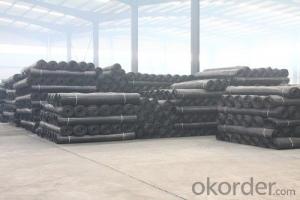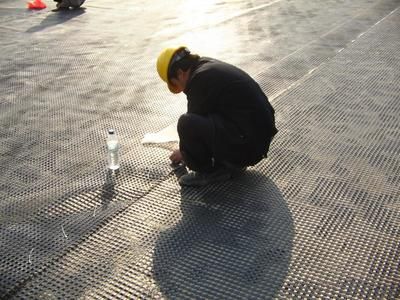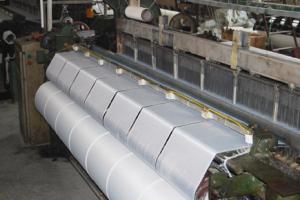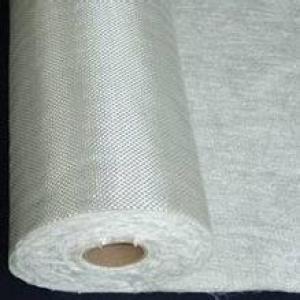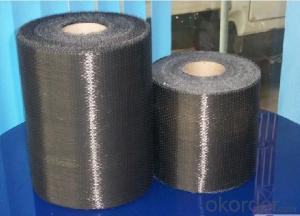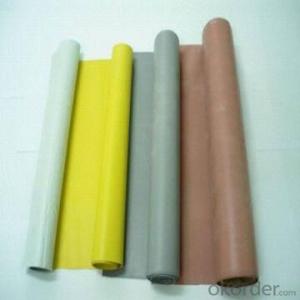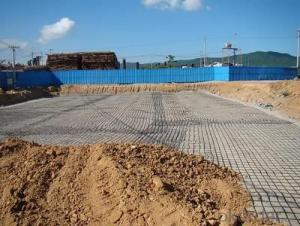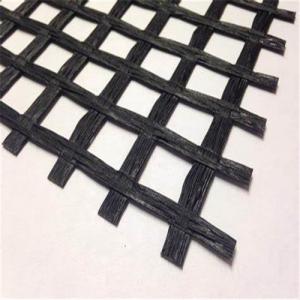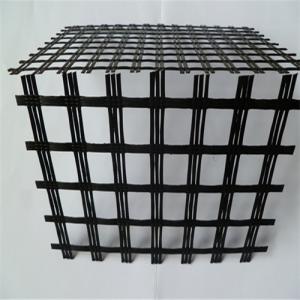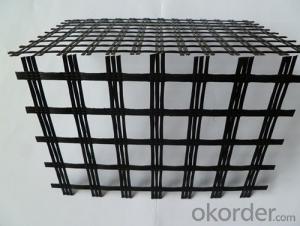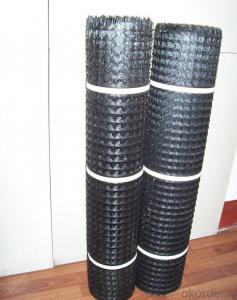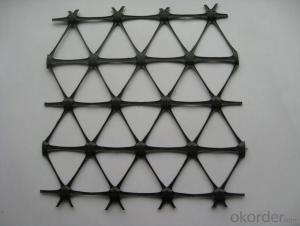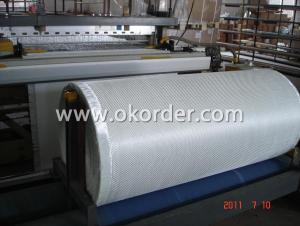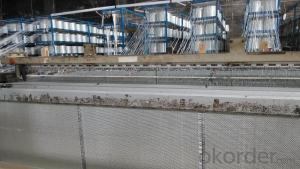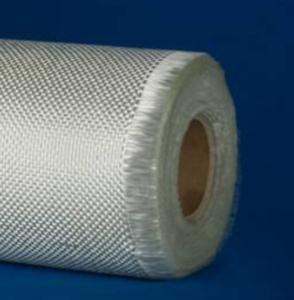Fiberglass Fireproof Fabric Geogrid for Bridge - High Quality Geogrid
- Loading Port:
- Qingdao
- Payment Terms:
- TT OR LC
- Min Order Qty:
- 1000 m²
- Supply Capability:
- 1000000 m²/month
OKorder Service Pledge
OKorder Financial Service
You Might Also Like
1.Brief Introduction
.Product has high strength, low elongation, high temperature, high modulus , light weight , good toughness, corrosion resistance , long life , etc. , can be widely used in the old concrete pavement , maintenance of airport runways , dams , river banks , while slope protection , road bridge , enhancement engineering field, to the road surface can be enhanced , reinforced to prevent pavement rutting fatigue crack , hot and cold telescopic cracks and reflection cracks below , and can the pavement load stress dispersion , extending pavement life .he high tensile strength low - elongation : Fiberglass geogrid is a glass fiber , while the high tensile strength of glass fiber , more than other fibers and ordinary metals . Its high modulus , high resistance to deformation , elongation at break of less than 3% .
2.Characteristics
3 No long-term creep : as a reinforcing material , with the ability to resist deformation under the load in the long-term creep resistance is extremely important, the glass fiber will not creep , to ensure that the products can long-term performance .
3.Application
Characteristics 4.Physical and chemical stability after special treatment agent coated handle , fiberglass geogrid to resist a variety of physical wear and chemical attack , but also to resist biological erosion and climate change to ensure that its performance is unaffected by the loss .
4.FAQ
5.good thermal stability : the melting point of glass fibers is above 1000 °C , to ensure the stability of the glass fiber geogrids to withstand high temperature in a paving job .
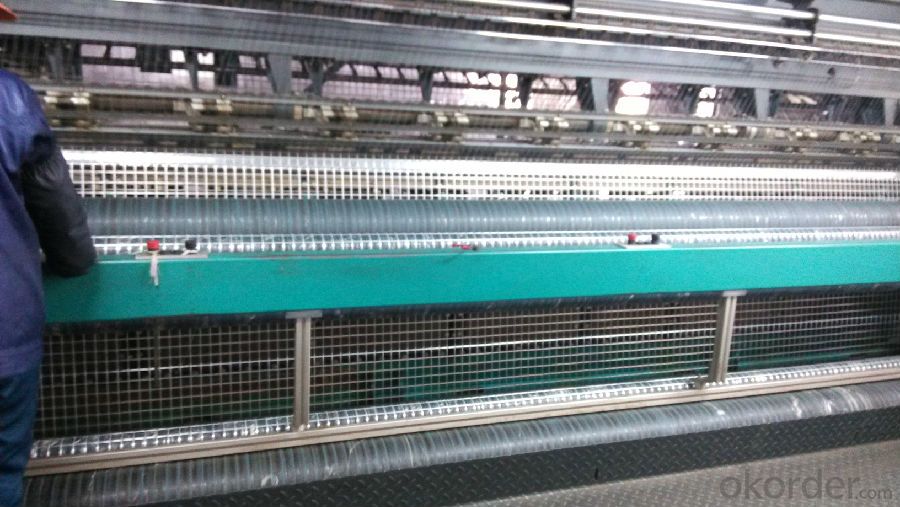
- Q: Is fiberglass fabric suitable for use in geotextiles?
- Fiberglass fabric is indeed suitable for use in geotextiles. It possesses remarkable strength and durability, making it an ideal choice for situations that necessitate geotextiles. Geotextiles are employed in a variety of civil engineering projects to provide stability, separation, filtration, and reinforcement. Fiberglass fabric is capable of effectively fulfilling these functions due to its exceptional tensile strength, resistance to chemicals, and ability to withstand high temperatures. Moreover, it offers significant resistance to biological decay, ensuring its longevity as a geotextile material. Being non-biodegradable, it will maintain its integrity over time, guaranteeing long-term performance and stability. Consequently, fiberglass fabric emerges as a suitable and dependable option for geotextile applications.
- Q: What is the advantage of coating waterproof layer with matrix reinforcing material?
- Waterproof layer construction, often in a waterproof coating is added in the glass fiber cloth or polyester fiber cloth as matrix reinforced material, its main purpose is: with the carcass reinforcing material deformability of gutter, eaves gutter, eaves, the water node location details, because the temperature deformation of roof structure is not synchronized, easy to deform and crack therefore, caused by leakage, in roof waterproof weak parts must be in the construction of large area coating waterproof layer, easy to leak in these lines or at least additional outward widening 200mm layer is coated with a cloth, enhance the anti deformation ability of waterproof film.
- Q: Can fiberglass fabrics be used for reinforcement in wind turbine blades?
- Yes, fiberglass fabrics can be used for reinforcement in wind turbine blades. Fiberglass is a commonly used material in wind turbine blade manufacturing due to its high strength, durability, and lightweight properties. It helps enhance the structural integrity and performance of the blades, making them more efficient in capturing wind energy.
- Q: Can fiberglass fabric be used for making stage backdrops?
- Yes, fiberglass fabric can be used for making stage backdrops. Fiberglass fabric is known for its durability and strength, making it suitable for various applications, including stage backdrops. It offers excellent resistance to heat, fire, and chemicals, making it a safe and reliable choice for theatrical settings. Additionally, fiberglass fabric can be easily painted or printed on, allowing for customization and creative designs to enhance the visual appeal of the stage backdrop. Its lightweight nature also makes it easy to handle and install. However, it is important to note that fiberglass fabric should be properly treated with fire-resistant coatings or finishes to ensure safety in the event of a fire. Overall, fiberglass fabric is a versatile material that can be effectively used for creating stage backdrops.
- Q: Can fiberglass fabric be used for reinforcement in water purification tanks?
- Indeed, fiberglass fabric proves to be a valuable asset when it comes to reinforcing water purification tanks. Renowned for its remarkable strength-to-weight ratio and long-lasting nature, fiberglass fabric stands as an ideal choice for fortifying tanks that endure perpetual water exposure. By bolstering the tank's structure, it effectively safeguards against deformation or collapse caused by the water's weight or external pressures. Moreover, fiberglass fabric's resistance to corrosion and chemicals guarantees its integrity, preventing any potential water contamination throughout the purification procedure.
- Q: Magnesite material instability made sheds or greenhouse skeleton for a few years
- Magnesite cement is gas cementing material, special environmental requirements, magnesite greenhouse scaffold has good water resistance, namely: in the long-term high temperature and humidity strength is not decreased; at the same time magnesite cement in magnesium chloride is harmful to the crops, so the firm can not back to the brine magnesite greenhouse bracket. Through scientific modification technology and reasonable production process, we have effectively solved these technical problems.
- Q: What are the potential health risks associated with handling fiberglass fabric?
- Handling fiberglass fabric can potentially pose several health risks. One of the main concerns is the possibility of skin irritation or allergic reactions. The tiny glass fibers in fiberglass fabric can cause irritation to the skin, leading to redness, itching, and rashes. Prolonged or repeated exposure to these fibers can also result in dermatitis, a condition characterized by inflammation of the skin. In addition to skin irritation, fiberglass fabric can also be harmful if inhaled. When the fabric is cut, sanded, or disturbed in any way, it releases small fibers into the air. Breathing in these fibers can irritate the respiratory system, causing coughing, wheezing, and shortness of breath. Over time, repeated exposure to fiberglass fibers may lead to more serious respiratory conditions such as bronchitis or even lung cancer. Furthermore, the small size of fiberglass fibers makes them difficult to see and remove from the body once they have been inhaled or come into contact with the skin. This can lead to long-term health risks as these fibers can become lodged in the lungs or other organs, causing chronic inflammation and scarring. To minimize the potential health risks associated with handling fiberglass fabric, it is important to take proper precautions. This includes wearing protective clothing such as gloves, long sleeves, and pants to prevent direct contact with the skin. Using a respirator or mask can help reduce the inhalation of fiberglass fibers. It is also crucial to work in a well-ventilated area or use exhaust fans to minimize the concentration of airborne fibers. Regularly cleaning and maintaining workspaces to remove any accumulated fibers is also recommended. Overall, while fiberglass fabric has numerous applications and benefits, it is important to be aware of the potential health risks associated with its handling. By taking appropriate precautions, individuals can minimize the likelihood of experiencing adverse health effects.
- Q: Can fiberglass fabric be used for reinforcement in boat hulls?
- Yes, fiberglass fabric can indeed be used for reinforcement in boat hulls. Fiberglass is a popular choice for boat construction due to its high strength-to-weight ratio, durability, and resistance to water and corrosion. When used as a reinforcement material, fiberglass fabric is typically laid up in multiple layers and impregnated with a resin, such as polyester or epoxy, to form a composite structure. This composite material provides increased stiffness and strength to the hull, making it more resistant to impacts and flexing. Additionally, fiberglass fabric can be easily molded into complex shapes, making it suitable for reinforcing various parts of a boat hull. Overall, fiberglass fabric is a versatile and reliable option for reinforcing boat hulls and is widely used in the marine industry.
- Q: What are the high temperature resistant fiberglass fabrics made in China?
- Before, domestic and foreign countries have a big gap. Later, with the upgrading of domestic technology, some large glass fiber enterprise production products and foreign countries have been comparable.
- Q: Can fiberglass fabric be used for making soundproofing materials?
- Yes, fiberglass fabric can be used for making soundproofing materials. Its dense and fibrous composition helps absorb sound waves, reducing noise transmission and enhancing sound insulation capabilities.
Send your message to us
Fiberglass Fireproof Fabric Geogrid for Bridge - High Quality Geogrid
- Loading Port:
- Qingdao
- Payment Terms:
- TT OR LC
- Min Order Qty:
- 1000 m²
- Supply Capability:
- 1000000 m²/month
OKorder Service Pledge
OKorder Financial Service
Similar products
Hot products
Hot Searches
Related keywords

